The inspiration for this blahg is two fold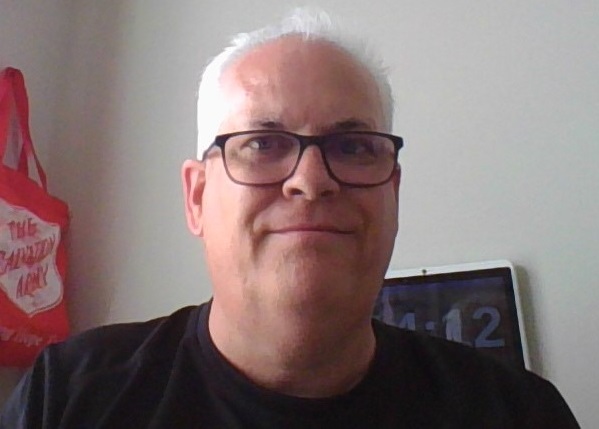 . I’ve been meaning to post a blahg about a certain jazz musician ever since my first blahg, THE BLAHG & THE MOST HAPPY SOUND. That was back in October of 2011. I mentioned in that first blahg the name of the artist and said a blahg dedicated to him was coming soon. I next referenced the band in a November 2013 blahg entitled ZOEY, FRANK, JUNE & ALL THAT JAZZ. I even promised in that blahg that I was going to dedicate a blahg very soon to the artist/band. The first inspiration for this blahg was when during this past week I pulled out some homemade CDs that someone sent me of the band many years ago and that got me thinking that I was overdue on dedicating a blahg to this artist/band.
. I’ve been meaning to post a blahg about a certain jazz musician ever since my first blahg, THE BLAHG & THE MOST HAPPY SOUND. That was back in October of 2011. I mentioned in that first blahg the name of the artist and said a blahg dedicated to him was coming soon. I next referenced the band in a November 2013 blahg entitled ZOEY, FRANK, JUNE & ALL THAT JAZZ. I even promised in that blahg that I was going to dedicate a blahg very soon to the artist/band. The first inspiration for this blahg was when during this past week I pulled out some homemade CDs that someone sent me of the band many years ago and that got me thinking that I was overdue on dedicating a blahg to this artist/band.
The second inspiration is WHAT ON EARTH IS A SCOBEYFAN? which I derive from a recent video that was posted by my son on his Analog Resurgence YouTube page. I have mentioned my son, Noah, and his Analog Resurgence page in a previous blahg, 16 INCHES OF TROUBLE OR LIKE FATHER LIKE SON. Here’s what I had to say about him in that blahg:
So about now, you’re probably wondering about that alternate title to this blahg “Like Father, Like Son”. Well, recently my son Noah posted the first in his Youtube video series about Analog Resurgence. While I’m all about the old records and the technology to play them, Noah’s all about old cameras for filming and photography.
You can check out all of Noah’s videos at https://www.youtube.com/channel/UCL9A6v7YSOOVXwCpao6Bszg. He makes money by the number of views so check out all of his videos and don’t skip through the ads because he makes more money if people view the ads as well. He also has a Patreon account where you can support him and get links for exclusive content. That’s also available through the above YouTube link.
Getting back to the second inspiration for this blahg, specifically with the title, I was inspired by one of Noah’s most recent videos:
About 49 seconds in Noah shows a clip of a 16mm film he had purchased at a thrift store. The film is “What On Earth And In The Sea”. There were a number of “What On Earth” shorts produced in the early 1970s and I remember seeing a few over the years. There’s a website, What on Earth… (partially lost animated shorts that is dedicated to the What On Earth series. Here’s some information from that website:
What on Earth… was a series of approximately 60 animated vignettes featuring postage stamps from around the world. The shorts were produced for Canadian television by Crawley Films in around 1970 and originally aired on CBC between programs. In the late 1980s, the series was repurposed as filler content for Canadian channels YTV and TVOntario.[1]
Concept:
In each 2-minute vignette, a narrator (possibly Chris Wiggins, according to some recollections) would recount a historic event or read through a poem over a musical background. The shorts were illustrated with postage stamps from around the world.
The vignettes’ production was sponsored by the Canada Post Corporation.
Apparently there are not many of these to view online so I’ve asked my son to do some sort of scan of the film and post it to YouTube. I think there are many fans of these shorts out there. I took the inspiration for this blahg from What On Earth and tipped it at the end to match the subject of this blahg. Here is one of the What On Earth films:
Okay okay, enough about the inspiration What On Earth Is Scobeyfan? I guess to be truthful, a third inspiration is the fact that the word Scobeyfan is my username on a number of websites. I have used Sinatrafan in the past but as the Internet has grown, there are more people using that one and I think I’m the only one that uses Scobeyfan. Nobody has ever asked me what it means but it’s a tribute to the late great trumpeter Bob Scobey. I don’t want to fill this blahg up with a full biography because that’s available elsewhere, which I will speak to in a little bit. Here’s an excerpt from Bob Scobey’s Wikipedia page:
Robert Alexander Scobey Jr. (December 9, 1916 – June 12, 1963) was an American jazz musician. He was born in Tucumcari, New Mexico, and died in Montreal, Quebec, Canada.
He began his career playing in dance orchestras and nightclubs in the 1930s. In 1938, he worked as second trumpeter for Lu Watters in the Yerba Buena Jazz Band. By 1949, he was leading his own band under the name Bob Scobey’s Frisco Band. From 1950 the group continued to play a three-year residency at the Victor & Roxie’s, where their popularity grew. Clancy Hayes joined the band to sing, play banjo and had his own compositions such as “Huggin’ and a Chalkin'” recorded. The collaboration recorded over two hundred tracks until he left in 1959 to follow a solo career.
From 1954-57, African-American blues singer Lizzie Miles recorded and toured with the band.
In 1955, Scobey and his band played dates at San Quentin Prison and at the Rancho Grande in Lafayette, California—a sizable roadhouse with a dance floor. In 1957 he recorded for Verve Records and RCA Victor. An important and successful album for RCA was Bing with a Beat recorded with Bing Crosby in 1957. From early in 1956, he toured colleges and universities, and in 1958 he recorded many of the student favorites in New York, the album College Classics (RCA Victor LPM 1700).
In 1959 Scobey opened the Club Bourbon Street, Chicago.
Death:
Scobey died of cancer in 1963 in Montreal, Canada. His wife Jan produced a biography entitled “He Rambled!” and arranged for his band to form again and record some blues songs. She also saw to the reissuing of his albums.
I want to highlight two things from the Wikipedia entry, the album “Bing With A Beat” that Bob Scobey did with Bing Crosby and the biography “He Rambled!” written by his widow, Jan Scobey. 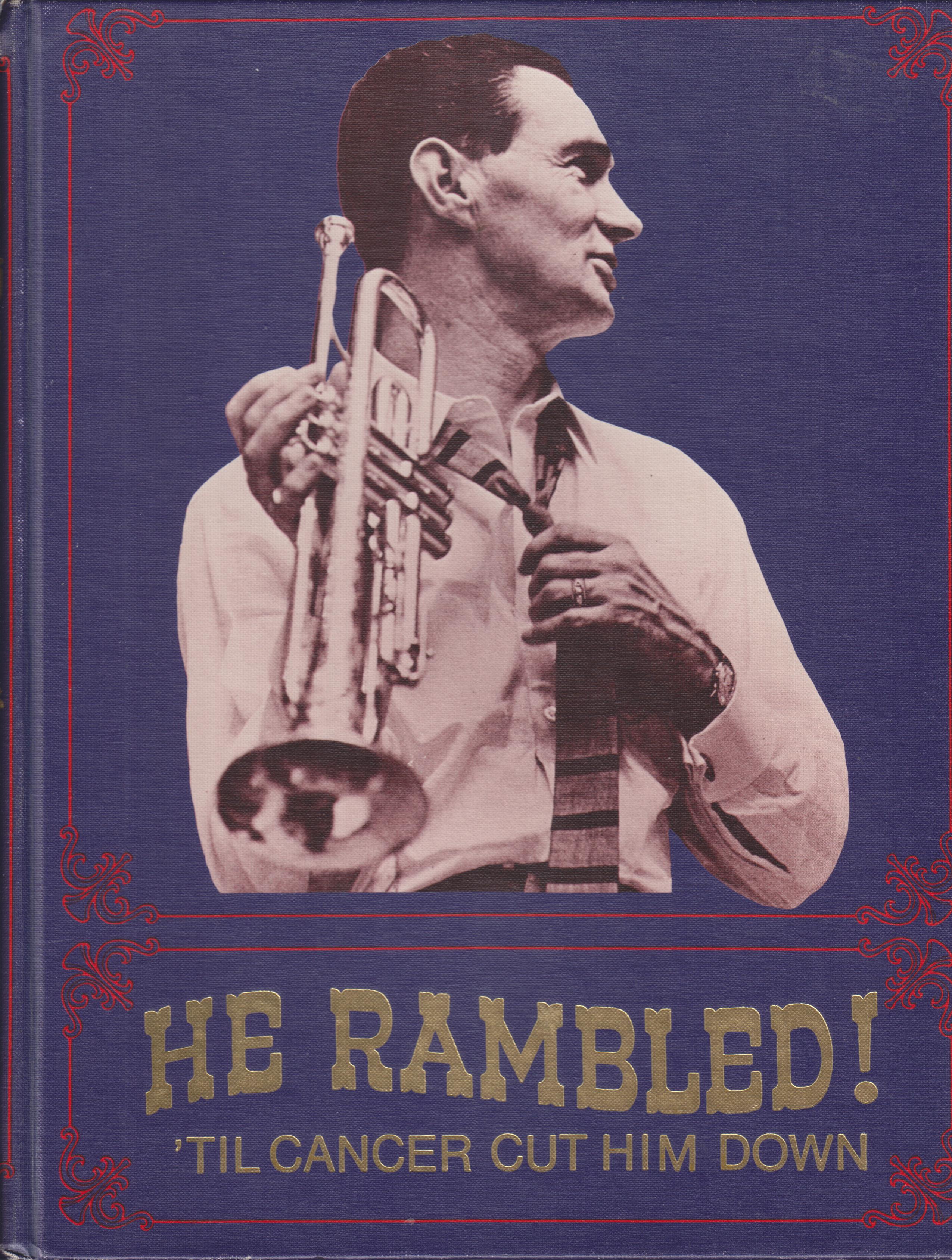 The full title of the book is “He Rambled! ‘Til Cancer Cut Him Down.” It’s a beautiful hardcover book with a full discography, of LPs only, and chock full of great facts and photos. I’m not sure if you can still purchase this book. Jan Scobey once ran a mail-order Jazz company and I would receive catalogues like the one below from 2000:
The full title of the book is “He Rambled! ‘Til Cancer Cut Him Down.” It’s a beautiful hardcover book with a full discography, of LPs only, and chock full of great facts and photos. I’m not sure if you can still purchase this book. Jan Scobey once ran a mail-order Jazz company and I would receive catalogues like the one below from 2000:
I lost track or rather stopped communicating with Jan in the early 2000s but, at that time, she was still selling copies of the book. I’ll talk more about that later.
It’s an interesting but backwards story of how I became interested in Bob Scobey. I’ve always been a Bing Crosby fan as well and when I attended Trent University in Peterborough, Ontario in the early 1980s, I purchased a Bing LP at a local store called “Bing Crosby A Legendary Performer.” Below is a picture of the cover and some details from the inner sleeve:
If you click on the inner sleeve image you will get more details of the track listing. In case you can’t make it out, here are the tracks from both sides:
Side A:
Ol’ Man River Recorded January 11, 1928
Three Little Words Recorded August 26, 1930
It Must Be True Recorded October 29, 1930
Wrap Your Troubles In Dreams Recorded March 2, 1931
Just A Gigolo Recorded March 2, 1931
I’m through With Love Recorded September 2, 1931
Just One More Chance Recorded September 2, 1931
Side B:
Some Sunny Day Recorded February 19, 1957 in San Francisco with Bob Scobey’s Frisco Jazz Band
I’m Gonna Sit Right Down Recorded February 19, 1957 And Write Myself A Letter in San Francisco with Bob Scobey’s Frisco Jazz Band
Mack The Knife Recorded February 20, 1957 in San Francisco with Bob Scobey’s Frisco Jazz Band
Dream A Little Dream Of Me Recorded February 19, 1957 in San Francisco with Bob Scobey’s Frisco Jazz Band
Whispering Recorded February 20, 1957 in San Francisco with Bob Scobey’s Frisco Jazz Band
Down Among The Recorded February 20, 1957 Sheltering Palms in San Francisco with Bob Scobey’s Frisco Jazz Band
Now, I do like Bing’s earlier material but after hearing these tracks from 1957 with Bob Scobey’s Frisco Jazz Band, I was hooked. I found myself not just listening to Bing’s vocals by straining to just hear the band. Who was this band? I had never heard of Bob Scobey. This was 1982 or 1983 and there was no Internet (maybe the military had the Internet but they didn’t share it with me) so I couldn’t look up the band. I knew a guy that ran a local music store so I had him keep an eye out for a Bing Crosby album with Bob Scobey. I don’t think I even knew the title. Eventually the store owner located a copy of Bing With A Beat:
What a fantastic collaboration. It’s easily my favorite Bing Crosby album and definitely up there as one of my favourite Bob Scobey albums. Just give a listen to Bing and Bob on “Mack The Knife”:
It’s so difficult to offer up other tracks from this great album and totally neglect others. The whole album is an experience and I’m not doing justice by not referencing all of the songs. I decided I’d link to a YouTube video of the song “Whispering” because there’s a great interaction between Bing Crosby and Bob Scobey where Bing talks to Bob about his trumpet playing. Here’s a hint, search YouTube for Bing Crosby and Bob Scobey and you’ll find links to all of the songs on the album.
The rest of my story as it relates to discovering Bob Scobey is very vague after that. I might have acquired some of his other albums through my local record store but the details are a little fuzzy to me. Age will do that. With the advent of the Internet and Ebay, I’ve been able to acquire all of his albums and then some. I do remember somehow finding out that there was this great book about Bob Scobey, the one I referenced written by Jan Scobey, but I tried to borrow it from my local library to no avail. I was trying to use an inter-library loan where another library that has it lends it out to our local library who lends it to me. I was told that it was a new book and couldn’t be used for inter-library loan. I found that odd because the book was published in 1976. My library did provide information about the publisher so I contacted them and they forwarded my request on to Jan Scobey. Eventually, I would buy the book from her but not before I sent her a letter about my interest in Bob Scobey and she sent me back the following postcard in September of 1995:
As I have mentioned, Jan Scobey’s book is a wonderful resource on the life of Bob Scobey with a full discography of albums. Here are some cover shots of all of the albums associated with Bob Scobey. Click on any of them for a larger view.
Some of these albums have been issued on CD. The Good Time Jazz issues such as Scobey & Clancy (L-12009), Bob Scobey & His Frisco Band With Clancy Hayes (L-12006),
Scobey Story, Vol. 1 and Vol. 2 (12032 & 12033), and Direct From San Francisco (12023) have each received a CD issue. The Yerba Buena Jazz Band records are also available on CD as is the Bunk & Lu album and the three Jansco issues of Scobey and His Frisco Band! and the two volumes of The Great Bob Scobey. Scobey & Clancy Raid the Juke Box and Bing with a Beat are available on CD as is the Claire Austin album “When Your Lover Has Gone.” None of the other RCA releases or the three Verve albums have been reissued on CD. Of course the Sesac release and the Kraft album, Jelly ‘N Jam and Jazz are still only vinyl releases and the early tracks of Bob Scobey as Alexander’s Jazz Band have only been compiled on LP.
So, where does this blahg go from here? I was thinking about that and thought I would concentrate on the rarities. The CD issues are excellent albums and worth tracking down or many can be found on YouTube. I’m going to put up some tracks from the rare to find albums and some comments of my own. Before I do that, I want to offer up a couple of scans from the 2000 issue of Jan Scobey’s Hot Jazz that I previewed earlier in this blahg. These two pages reference Jan Scobey’s great book but give some historical context and insight into the legend of Bob Scobey. Make sure you click on both images for larger readable scans.
Here’s a collage of the handmade CDs that I’m going to use for some samples
Some of the earliest recordings on which Bob Scobey performed were with the Yerba Buena Jazz Band. Here’s the very minor Wikipedia entry on the Yerba Buena Jazz Band:
Lu Watters & the Yerba Buena Jazz Band is the name of the Traditional Jazz revival band founded by Lu Watters. Notable members include singer and banjoist Clancy Hayes (from 1938 to 1940); clarinetist Bob Helm; trumpeter Bob Scobey; trombonist Turk Murphy; tubist/bassist Dick Lammi; and Watters himself.
I wanted to include some of the tracks from the homemade CDs but the volume on the Yerba Buena tracks is very low. Instead, I’ll post here a couple of YouTube videos of early Yerba Buena Jazz Band. First up is “High Society” that the group recorded on March 29, 1942. The ensemble consisted of Lu Watters – Coronet, Bob Scobey – Trumpet, Turk Murphy – Trombone, Ellis Horne – Clarinet, Wally Rose – Piano, Clancy Hayes and Russ Bennett on Banjos, Squire Girsback – Tuba, Bill Dart – Drums.
Here’s another Yerba Buena track with Bill Dart on drums, Bob Helm on Clarinet, Lu Watters and Bob Scobey on trumpets, Dick Lammi on Bass Guitar, Harry Mordecai on Banjo, Turk Murphy on Trombone and Wally Rose on Piano. This time it’s “Pastime Rag No. 5”:
For a while Bob Scobey appeared as a member of Turk Murphy’s Bay City Stompers with Turk Murphy on trombone, Bob Scobey on trumpet, Bob Helm on clarinet, Burt Bales on piano, and Harry Mordecai on banjo.  In December 1947 the band recorded four songs that were issued on a pair of 78s on the Jazz Man label. Eventually Good Time Jazz put the four songs out on an EP (at left). The songs were “Shake That Thing”, “Brother Lowdown”, “Yellow Dog Blues”, and “Kansas City Man Blues”. From the December 1947 session, here are “Shake That Thing” and “Kansas City Man Blues”:
In December 1947 the band recorded four songs that were issued on a pair of 78s on the Jazz Man label. Eventually Good Time Jazz put the four songs out on an EP (at left). The songs were “Shake That Thing”, “Brother Lowdown”, “Yellow Dog Blues”, and “Kansas City Man Blues”. From the December 1947 session, here are “Shake That Thing” and “Kansas City Man Blues”:
“Shake That Thing”:
“Kansas City Man Blues”:
Bob Sc:format(jpeg):mode_rgb():quality(90)/discogs-images/R-3473674-1561300124-4576.jpeg.jpg) obey would play again with Turk Murphy’s Jazz Band in 1950 and all sides were issued on the Good Time Jazz label as Turk Murphy’s San Francisco Jazz. The entire album has also been released on CD. In addition to Turk Murphy, Bob Scobey, and Burt Bales, they were joined by Bill Napier on clarinet, Bill Newman on Banjo, Stan Ward on Drums and Squire Girsh on bass. Here’s a YouTube sample of the 1950 band on “Irish Black Bottom”:
obey would play again with Turk Murphy’s Jazz Band in 1950 and all sides were issued on the Good Time Jazz label as Turk Murphy’s San Francisco Jazz. The entire album has also been released on CD. In addition to Turk Murphy, Bob Scobey, and Burt Bales, they were joined by Bill Napier on clarinet, Bill Newman on Banjo, Stan Ward on Drums and Squire Girsh on bass. Here’s a YouTube sample of the 1950 band on “Irish Black Bottom”:
I don’t really want to concentrate on the years Bob Scobey spent with the Yerba Buena Jazz Band or as a member of Turk Murphy’s Band because my fondness for his music comes from his fronting his own band. In 1948 Bob Scobey had a band called “Alexander’s Jazz Band” and he recorded a number of sides in 1947/1948 for the Trilon and Rag Time Records label. These have been compiled on a couple of LPs with the main one being the one below:
The line-up for the band consisted mainly of Bill Dart on drums, Bob Helm on Clarinet, Bob Scobey on trumpet, Squire Girsback on Bass, Harry Mordecai on Banjo, and Wally Rose on Piano. Here a couple of samples of the early Bob Scobey sound on “Alexander’s Ragtime Band” and “Doin’ The Grizzly Bear”:
“Alexander’s Ragtime Band” with vocal by Bob Scobey:
“Doin’ the Grizzly Bear”:
Now here are a couple of live tracks of “Alexanders’ Ragtime Band” when they appeared at the Oakland Public Library in 1947. These are from the handmade CDs and the sound quality is not perfect. The band consisted of Bob Scobey on trumpet, Jack Buck on trombone, Jack Crook on clarinet, Burt Bales on piano, and Pat Patton on bass and banjo. Here are “Blues My Naughty Sweetie Gives To Me” and “Tin Roof Blues”:
“Blues My Naughty Sweetie Gives To Me”
“Tin Roof Blues”
I really think that Bob Scobey started to have a great sound in the 1950s when he was recording for Good Time Jazz. Those are all officially licensed recordings and I want to steer clear of violating any copyrights so I’m going to post a few live tracks here from around that time as well as some alternate takes from released material that is not available on CD. Here’s one of the unissued tracks from a 1950 Good Time Jazz session. The band now consists of Bob Scobey on trumpet, Jack Buck on trombone, George Probert on clarinet, Wally Rose on piano, Dick Lammi on bass, Clancy Hayes on banjo, and Fred Higuera on drums. Here’s “Long Gone” with Clancy Hayes on vocal:
“Long Gone”:
Here’s a sample of the live ensemble in 1951 at Jenny Lind Hall in Oakland California. Bob Scobey, Jack Buck, Clancy Hayes, and Fred Higuera are still in the band but Darnell Howard is on clarinet, Burt Bales is on piano, and Squire Girsback is on the bass. Here’s “Panama” and “Clarinet Marmalade”:
“Panama”:
“Clarinet Marmalade”:
The sound quality on some of these old live recordings vary so I’m going to move onto some recorded material that is very rare and in much better shape. A real treat is up next. In October of 1953 Bob Scobey was fronting a band that appeared at the 1953 Dixieland Jubilee in Los Angeles. Bob Scobey was joined on stage by the late great Sidney Bechet. Four songs from that appearance have been issued on three different EPs from the United Kingdom, France, and Sweden.
I own the one on the top left. After I purchased it, I contacted Jan Scobey because it had not been included in her discography. I mailed her a scan of the cover. She later wrote back and said she had been aware of the session but had never seen the EP. The songs were “On The Sunny Side Of The Street”, “Muskrat Ramble”, “Saint Louis Blues”, and “Summer Time.” I could not find a lot of details on the members of Scobey’s band at the time other than Bob Scobey, Clancy Hayes was on banjo, Jack Buck on trombone, Bob Hotaling on drums, Burt Bales on piano, and Ellis Horne on clarinet. We are lucky that someone has created videos of the four songs from the Dixileand Jubilee using photos from that date.
“On The Sunny Side Of The Street”
“Muskrat Ramble”:
“Saint Louis Blues”:
“Summer Time”:
I hadn’t listened to the Scobey/Bechet tracks in a while but last night when I heard “Summertime” again, I said out loud “It Doesn’t Get Better Than That!”
In 1957 Bob Scobey started recording for Verve. The three albums he produced for Verve were “Bob Scobey’s Band”, “The San Francisco Jazz of Bob Scobey”, and “Bourbon Street.” The ensemble changed a bit from album to album.
—“Bourbon Street” was Bob Scobey, Ralph Sutton on piano, Clancy Hayes on guitar and banjo, Bob Short on bass and tuba, and Fred Higuerea on drums. Jack Buck on trombone on some tracks and Bill Napier on clarinet. Vocals by Lizzie Miles
—“The San Francisco Jazz of Bob Scobey” was Bob Scobey, Clancy Hayes, Jesse “Tiny” Crump on piano, Bill Napier on clarinet, Jack Buck on trombone, Fred Higuera on drums, and Hal McCormick on bass
—“Bob Scobey’s Band” was Jack Buck, Will Sudmeirer & Jack Sudmeier on trombones, Frank Snow & Bob Scobey on trumpets, Bill Napier & Leon Ratsliff on clarinet, Jess “Tiny Crump on piano, Fred Higuera on drums, and Hal McCormick on bass, Bob Short on tuba, and Clancy Hayes on banjo, guitar, and vocals.
None of these records, to my knowledge have had CD releases. From “Bourbon Street” here are “On Revival Day” and “Deep Henderson” (not named after me):
“On Revival Day”:
“Deep Henderson”:
From “The San Francisco Jazz of Bob Scobey” here are “Copenhagen” and “Getting My Boots” with a great Clancy Hayes vocal.
“Copenhagen”:
“Getting My Boots”:
The last of the Verve albums to present here is “Bob Scobey’s Band.” I’m not sure of the order in which the three Verve albums were released but I think the sound of the band is phenomenal on the Verve albums and really needs to rediscovered with CD pressings. From the album “Bob Scobey’s Band” here are “Dardanella” and a fantastic version of “Stardust” featuring Bob Scobey’s horn. I’m also going to throw in “Stars Fell On Alabama” because of Clancy Hayes’ vocal.
“Dardanella”:
“Stardust”:
“Stars Fell On Alabama”:
:format(jpeg):mode_rgb():quality(90)/discogs-images/R-7977505-1551998069-6428.jpeg.jpg) In 1955 Bob Scobey backed the vocalist Claire Austin on her album “When Your Lover Has Gone. The band included modern jazzmen Barney Kessel on guitar and Shelly Manne on drums, as well as studio/Dixieland musicians Stan Wrightsman on piano and Morty Corb on bass. It’s hard to listen for Bob Scobey on this album because Claire Austin’s vocals are so lush and draw your attention. Bob does have a nice solo though on “I’ll Never Be The Same” and the title track “When Your Lover Has Gone”. Both are very haunting.
In 1955 Bob Scobey backed the vocalist Claire Austin on her album “When Your Lover Has Gone. The band included modern jazzmen Barney Kessel on guitar and Shelly Manne on drums, as well as studio/Dixieland musicians Stan Wrightsman on piano and Morty Corb on bass. It’s hard to listen for Bob Scobey on this album because Claire Austin’s vocals are so lush and draw your attention. Bob does have a nice solo though on “I’ll Never Be The Same” and the title track “When Your Lover Has Gone”. Both are very haunting.
Moving on to the RCA albums, which I mentioned have never had CD releases except “Bing With A Beat”, it’s a shame that there have been no CD releases of the other five albums. The remaining RCA releases are “Beauty And The Beat”(1957), “Between 18th And 19th On Any Street” (1957), “College Classics” (1958), “Something’s Always Happening On The River” (1959), and “Rompin’ And Stompin'” (1960). I really like these albums and Bob Scobey and Clancy Hayes are sensational together. I’ll present some songs from all five albums but I encourage anyone to track down the original vinyl releases.
First up is “Beauty And The Beat.” The band on this album is Bob Scobey and Mannie Klein on trumpets, Clancy Hayes on banjo and vocals, Abe Lincoln, Warren Smith, Elmer Schneider, Jack Buck on trombones, Matty Matlock, Bill Napier, and Wayne Songer on clarinet, Ralph Sutton on piano, Phil Stephens on bass, Bob Short on tuba, and Freddie Higuera on drums. Here are “Miss Annabelle Lee” and “Lulu’s Back in Town”:
“Miss Annabelle Lee”:
“Lulu’s Back in Town”:
“Swingin’ On The Golden Gate” was the second album released by Bob Scobey on RCA in 1957 . The band here is Bob Scobey and Dick Cathcart on trumpets, Matty Matlock on clarinet, Abe Lincoln, Warren Smith, and Jack Buck on trombones, Ralph Sutton on piano, Red Callender on bass, Bob Short on tuba, Sammy Goldstein on drums, and Clancy Hayes on gutiar, banjo and vocals. Again, another great RCA album and here are “New Orleans” with that great Scobey trumpet and “Let’s Dance The Ragtime, Darlin'” with Clancy’s great vocal:
“New Orleans”:
“Let’s Dance The Ragtime, Darlin’ “:
Next is an album that has a bit of a mystery to it. The album is “Between 18th And 19th On Any Street” released in 1958. The first time I came across this album was an EP (4 song 45rpm) that I picked up in the late 90s or early 2000s at a record store in Toronto. Here’s what the cover to that EP looks like:
Note the 4 tracks listed on the front cover. When I finally tracked down a copy of the full album, the song “My Bucket’s Got A Hole In It” was not on the album. I eventually bought another copy and the song was missing from that copy as well. I wrote to Jan Scobey about it because in her book, the discography mentions the full album but does not list “My Bucket’s Got A Hole In It.” She replied to me saying that she was unaware that this extra song existed and all copies of the album that she had seen did not list the song. I eventually discovered that there were Stereo and Mono issues of the album and “My Bucket’s Got A Hole In It” is missing on all Stereo issues. I guess my EP was a mono release because the song is there but my two LP copies are both Stereo issues. So, the song “My Bucket’s Got A Hole In It” is a bit of a rarity so I’ll present it here along with “Bob’s Blues”. The band on this album is Bob Scobey on trumpet, Jack Buck and Doug Skinner on trombones, Pete Dovidio on clarinet, Clyde Pound on piano, Tom Beeson on bass, Dave Black on drums, and Clancy Hayes with banjo and vocals.
“My Bucket’s Got A Hole In It”:
“Bob’s Blues”:
The next 1958 release for Bob Scobey was “College Classics.” The album is reminiscent of 1920s college tunes at a tavern or sung by a college vocal group. The band consisted of the same musicians that appeared on “Between 18th And 19th On Any Street,” Bob Scobey on trumpet, Jack Buck and Doug Skinner on trombones, Pete Dovidio on clarinet, Clyde Pound on piano, Tom Beeson on bass, Dave Black on drums, and Clancy Hayes with banjo and vocals. Here are “I’ve Been Floating Down The Old Green River” and “Shine On Harvest Moon” with nice vocals by Clancy Hayes:
“I’ve Been Floating Down The Old Green River”:
“Shine On Harvest Moon”
The last 1958 album for Bob Scobey on RCA was “Something’s Always Happening On The River.” Bob Scobey is back of course on trumpet as well as Clancy Hayes on banjo and vocals. This time they’re joined by Rich Matteson on tuba and bass trumpet, George Duvivier on bass, Jim Beebe on trombone, Gene Schroeder on piano, Brian Shanely on clarinet, Dave Black on drums, and Toni Lee Scott along with Bob Scobey on other vocals. I really like the title track “Something’s Always Happening On The River” so I’m going to offer up that as well as “Alexander’s Ragtime Band” which features vocals by Clancy Hayes, Toni Lee Scott, and Bob Scobey.
“Something’s Always Happening On The River”:
“Alexander’s Ragtime Band”:
The last RCA album was released in 1960 and was Jan Scobey’s favorite of the RCA albums. The album is “Rompin’ And Stompin’ ” and here’s what Jan Scobey had to say about it in her book:
“It features a wide library of ‘Jelly Roll Morton’ tunes, all fine classics of Dixieland Jazz. There are tremendous intricacies in the solo playing; as well as an outstanding ensemble performance. RCA has discontinued issuing this album. Sometimes they are available through jazz societies or record collectors. Perhaps with enough requests RCA may find it lucrative to re-issue.”
Yeah, RCA, why don’t you reissue it or better yet put out a box set of CDs of all of Bob Scobey’s records? The final RCA band was Bob Scobey, Rich Matteson on tuba, Brian Shanely on clarinet, Jim Beebe on trombone, Art Hodes on piano, Dave Black on drums, and Clancy Hayes on banjo and vocals. Here are “Kansas City Stomp” and “Fidgety Feet”:
“Kansas City Stomp”:
“Fidgety Feet”:
Before I move on to some other rare material, it would be a shame not mention another 1958 release but on the California Records label. :format(jpeg):mode_rgb():quality(90)/discogs-images/R-10455883-1497798961-2899.jpeg.jpg) The album was “Scobey & Clancy Raid The Juke Box.” It was an attempt to have Bob Scobey record some more contemporary, for the time, songs. Not all of the songs worked for Scobey and Clancy but there are a couple that I really enjoy. Here are the track listings:
The album was “Scobey & Clancy Raid The Juke Box.” It was an attempt to have Bob Scobey record some more contemporary, for the time, songs. Not all of the songs worked for Scobey and Clancy but there are a couple that I really enjoy. Here are the track listings:
- Bye Bye Love
- Singing the Blues
- Yellow Dog Blues
- Tammy
- Round and Round
- All Shook Up
- Love Letters in the Sand
- Marianne
- C. C. Rider
- So Rare
- Blueberry Hill
- Don’t Forbid Me
The band has some familiar player other than Bob Scobey and Clancy Hayes. Pud Brown is on clarinet, Jack Buck and Doug Skinner on trombones, Stan Wrightsman on piano, Bob Short on string bass and tuba, and Dave Black on drums. My favorite instrumental on this album is “Tammy.” Many may be familiar with Debbie Reynolds’ version on record and from the film. This time it’s Bob Scobey’s horn and the rest of the band joining in on their version of “Tammy.” I’ll have to rely on a YouTube link because this album has been issued on CD.
As for Clancy Hayes’ vocals on this album, I don’t think the contemporary songs of that time suited him. There is of course one exception for me and that’s Clancy’s version of “Round and Round.” This was a hit for Perry Como but I think Clancy does an excellent job with the vocals and the band does well backing him.
Keeping with 1960, when Bob Scobey’s last RCA album “Rompin’ And Stompin’ ” was released, I’m going to move on to the two rare albums that were released that year and were not distributed to the public at large. :format(jpeg):mode_rgb():quality(90)/discogs-images/R-11596921-1519142184-8483.jpeg.jpg) The first of these albums contains recordings that Bob Scobey did for Sesac in 1960. The album is “Bob Scobey and His Frisco Jazz Band Featuring Clancy Hayes.” Here is what Jan Scobey had to say about the Sesac recordings in her book:
The first of these albums contains recordings that Bob Scobey did for Sesac in 1960. The album is “Bob Scobey and His Frisco Jazz Band Featuring Clancy Hayes.” Here is what Jan Scobey had to say about the Sesac recordings in her book:
“At a new high-water mark in Bob’s career, Sesac recorded Scobey’s band. In the recording industry they provided piped-in music for shopping centers, office buildings, dental offices, and everywhere that continuous, canned ‘musak’ is needed
Scobey’s recordings for the Sesac Transcribed Library (about 12 were issued) are rare since these selections were never recorded on any other label available to the buying public. Fortunately, every so often, on a jet over Kansas, leaning back in a barber’s chair, or having your teeth drilled at the dentist’s, you will suddenly, out of the blue, hear the Happy Sounds of Scobey’s dixieland music–‘Memories of Bunk’ or ‘Sudan’!”
The band on the Sesac recordings consisted of Bob Scobey on trumpet, Doug Skinner & Ralph Hutchinson on trombones, Jack McConnell on clarinet, Floyd Bean on piano, Clancy Hayes banjo and vocal, Bob Short on tuba and bass, and Dave Black on drums. From the Sesac album here are the two songs that Jan Scobey mentioned, “Memories of Bunk” and “Sudan”:
“Memories of Bunk”:
“Sudan”:
After I had purchased the 12″ Sesac record I later discovered that Sesac had issued a couple of EPs:
The one above on the left is “Frisco Jazz in Hi-FI” and contains 4 songs from the full album, “Frisco Jazz Parade”, “Too Much Mustard”, “Bourbon Street”, and “Sudan”. The second EP, “Shades of Blue” only contains the song “Hobo Blues.” I bought them from an ex-disc-jockey. They had been sent to the radio station where he worked and were tossed out so he fished them out of the garbage. Imagine, throwing out Bob Scobey! There was even one more Sesac EP released, that I later purchased on Ebay, that contained the song “My Heart’s In Dixie” by Bob Scobey. The EP was “Did You Say Dixie.” The front and back covers are below, followed by the song “My Heart’s In Dixie”:
“My Heart’s In Dixie”:
Until recently, in fact as of the writing of this blahg, I thought the 12 songs on the 12 inch Sesac record were all there were from the Sesac sessions. I discovered today that Sesac also issued a transcription record that contained some of the recordings from the 12 inch record and four additional songs. Here are images of the transcription record:
The four additional songs are “Southern Comfort”, “Clarinet Capers”, “While You Were Far Away”, “Along The Wabash” and here they are:
“Southern Comfort”:
“Clarinet Capers”:
“While You Were Far Away”:
“Along The Wabash”:
Now, I’ll move on to one of the last extremely rare albums also recorded and released in 1960. 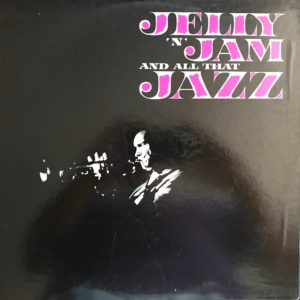 This wasn’t a record you could hear in an elevator or at the Dentist. This was a promotional record for Kraft Foods. Jan Scobey included it in her discography but provided no other details other than listing the musicians and the songs. The album is “Jelly ‘N’ Jam And All That Jazz.’ On side one of the record, Kraft’s spokesmen Perry Como and Ed Herlihy talk about what’s in store for advertising and sales promotion for Kraft Jellies and Preserves for the coming year. The second side is all Bob Scobey with Dave Black on drums, Buddy Lee on banjo, Tommy Smoot on piano, Connie Milano on bass, Bill Hanck on trombone, and Bill Napier on clarinet. The songs are “When The Saints Go Marching In” “Under The Double Eagle”, “Maple Leaf Rag”, “Georgia Camp Meeting” and “Peshtigo Court Stomp.” Here’s a scan of the information on the back cover. Click on the image to read from a larger version.
This wasn’t a record you could hear in an elevator or at the Dentist. This was a promotional record for Kraft Foods. Jan Scobey included it in her discography but provided no other details other than listing the musicians and the songs. The album is “Jelly ‘N’ Jam And All That Jazz.’ On side one of the record, Kraft’s spokesmen Perry Como and Ed Herlihy talk about what’s in store for advertising and sales promotion for Kraft Jellies and Preserves for the coming year. The second side is all Bob Scobey with Dave Black on drums, Buddy Lee on banjo, Tommy Smoot on piano, Connie Milano on bass, Bill Hanck on trombone, and Bill Napier on clarinet. The songs are “When The Saints Go Marching In” “Under The Double Eagle”, “Maple Leaf Rag”, “Georgia Camp Meeting” and “Peshtigo Court Stomp.” Here’s a scan of the information on the back cover. Click on the image to read from a larger version.
 It would be a shame not to offer up all five songs from this album so here they are:
It would be a shame not to offer up all five songs from this album so here they are:
“When The Saints Go Marching In”:
“Under The Double Eagle”:
“Maple Leaf Rag”:
“Georgia Camp Meeting”:
“Peshtigo Court Stomp”:
You may have noticed that by the time of the Kraft album, Clancy Hayes was no longer performing with Bob Scobey. This was a shame because the Bob Scobey and Clancy Hayes sound fit well together. To explain what happened, we have to back up a little in 1960 to before the Kraft LP. From Jan Scobey’s book she cites the following:
“Bob decided early in his career to handle his own bookings because of mishaps with agents, in the past. Bob sold his band to the Marlboro cigarette people for a television commercial. His band was featured and the commercial was televised all over the world.”
At the time of the Marlboro cigarette commercial both Clancy Hayes and Toni Lee Scott were still performing with Bob Scobey. I am not sure if Toni Lee Scott is still alive, I think she is, but she has a YouTube page at https://www.youtube.com/channel/UC4ESSEnQhcpZF8BrP0mrbBg where she hosts some videos of her performing and in 2017 she posted the Marlboro advertisement with herself, Clancy Hayes, and Bob Scobey and his band:
So why did Toni Lee Scott and Clancy Hayes part company with Bob Scobey? According to Jan Scobey’s book, Bob Scobey received more money for doing the commercial than the other performers. Jan argued that there was nothing shady about the deal but because it was Bob’s band and he did all of the organization and booking and performed then he was entitled to a larger share. Other members of the band disagreed and would eventually leave the band. Unfortunately, that was the end of the band that once featured Clancy Hayes and Toni Lee Scott.
While I’m on the subject of Bob Scobey on film or video, there exists other footage of Bob Scobey and his Band. Bob Scobey appeared on the “Playboy Penthouse” program in 1959/1960 and there are a couple of wonderful photos of Bob, Clancy, and the band appearing on the program:
Apparently Bob Scobey and his Frisco Jazz Band played “The Colonel Bogey March” and “The Black Bottom Stomp” and Clancy Hayes joined them and sang “Travellin’ Shoes” and “Ace in the Hole.” Unfortunately the video is not available to view.
There exists other footage of Bob Scobey and his 1961 band that is available to view. Bob and the band can be viewed performing at a party scene in the film “Living Venus”. The description of the film is that “Man and his partner, a photographer, start up a men’s magazine called “Pagan.” The magazine becomes a success, he leaves his fiancee, marries his star model, and complications ensue.” The first song that the band performs is appropriately titled “Pagan Party”:
The second video from the film is the title song “Living Venus”:
I’m not sure of the other musicians who performed with Bob Scobey in “Living Venus.” It might have been the same crew that appeared on the Kraft album. It may be the same band members that appeared on his last album he ever recorded.
In 1960 there would be one more album from Bob Scobey and his band. 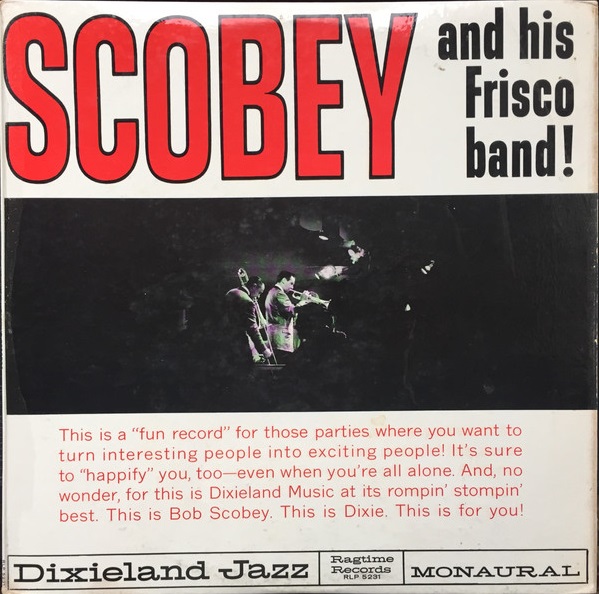 The album was “Scobey And His Frisco Band!” The album was recorded in 1960 and was issued on the Ragtime Label. Jan Scobey purchased it outright from Bob Scobey’s estate and the label changed to Jansco Records. The full album has not had a CD release but all the tracks were bonuses split over the two CDs of “The Great Bob Scobey and His Frisco Band, Volume 1 and Volume 2. Jan Scobey rated this as her favorite album. “This album is an instrumental. The sounds cover a wide range of feeling; from Misty, a mood tune, to the rip-roaring excitement of Bourbon St. Parade! I believe it successfully captures the entire range of Bob Scobey’s musical skills and types of playing.” Turning back to YouTube, here are the two songs that Jan mentions, “Misty” and “Bourbon St. Parade.” This was the last recorded album of Bob Scobey, although I don’t know if it follows or precedes the Kraft album, and the band features Bob Scobey on trumpet, Richard Nelson on trombone, Bill Napier on clarinet, Tommy Smoot on piano, Buddy Lee on banjo, Dickie Phillips on electric bass, and Dave Black on drums.
The album was “Scobey And His Frisco Band!” The album was recorded in 1960 and was issued on the Ragtime Label. Jan Scobey purchased it outright from Bob Scobey’s estate and the label changed to Jansco Records. The full album has not had a CD release but all the tracks were bonuses split over the two CDs of “The Great Bob Scobey and His Frisco Band, Volume 1 and Volume 2. Jan Scobey rated this as her favorite album. “This album is an instrumental. The sounds cover a wide range of feeling; from Misty, a mood tune, to the rip-roaring excitement of Bourbon St. Parade! I believe it successfully captures the entire range of Bob Scobey’s musical skills and types of playing.” Turning back to YouTube, here are the two songs that Jan mentions, “Misty” and “Bourbon St. Parade.” This was the last recorded album of Bob Scobey, although I don’t know if it follows or precedes the Kraft album, and the band features Bob Scobey on trumpet, Richard Nelson on trombone, Bill Napier on clarinet, Tommy Smoot on piano, Buddy Lee on banjo, Dickie Phillips on electric bass, and Dave Black on drums.
“Misty”:
“Bourbon St. Parade”:
Unfortunately, all great things come to an end. Bob Scobey would survive the breakup of his band after the Marlboro commercial arguments and would go on to form a new band. We have seen videos of that new band in “Living Venus” and heard them on the Kraft album and the last recorded album “Scobey and His Frisco band!” What Bob Scobey could not survive was cancer. 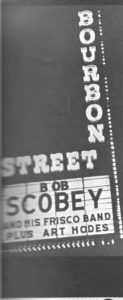 He was in Montreal to try a new experimental drug when his heart gave out in the wee small hours of June 12, 1963. From 1961 to 1963 he continued to perform and even toured Europe in 1962. I have another postcard in my collection which I keep inside my copy of Jan Scobey’s book. Before I display it, I want to explain that Bob Scobey opened a club in Chicago in 1961 called “Bourbon Street”. It was to be a base of operation when he was not out on the road. Other bands would perform there when Bob Scobey was touring. In fact, when he toured Europe in 1962, Kenny Ball and his band subbed for Scobey. When Bob Scobey returned from his European tour he sent out postcards to fans about his return to Bourbon Street. My postcard is one of those he sent out to a fan in Canada:
He was in Montreal to try a new experimental drug when his heart gave out in the wee small hours of June 12, 1963. From 1961 to 1963 he continued to perform and even toured Europe in 1962. I have another postcard in my collection which I keep inside my copy of Jan Scobey’s book. Before I display it, I want to explain that Bob Scobey opened a club in Chicago in 1961 called “Bourbon Street”. It was to be a base of operation when he was not out on the road. Other bands would perform there when Bob Scobey was touring. In fact, when he toured Europe in 1962, Kenny Ball and his band subbed for Scobey. When Bob Scobey returned from his European tour he sent out postcards to fans about his return to Bourbon Street. My postcard is one of those he sent out to a fan in Canada:
I believe that is Bob Scobey’s signature on this July 19th, 1962 postcard. It is sad to think that he would be dead less than a year later.
I don’t want to end this blahg on doom and gloom. For me, it’s all about the music. The Bob Scobey sound with Clancy Hayes is so special and even the later bands without Clancy had an awesome sound. For me, it started with that “B” side of that Bing Crosby album that would lead me to a pursuit of Bob Scobey. The first song I offered up in this blahg was the version of “Mack The Knife” that Bob Scobey did with Bing Crosby. I’m going to end this blahg with a different version of “Mack The Knife” with Clancy Hayes on vocal. Jan Scobey, on her Jansco label would also issue two volume LPs called “The Great Bob Scobey.” These were recorded in 1956 at The Jenny Lind Hall in Oakland, California. This was the earlier band of Bob Scobey and Clancy Hayes with Bill Napier on clarinet, Jack Buck on trombone, Jesse “Tiny” Crump and Ralph Sutton on piano, Bob Short on tuba, Hal McCormack on bass, Freddie Higuera on drums, and other vocals by Lizzie Miles. From Volume 2 here is “Mack The Knife”:
By the way, the correct answer to “What On Earth Is Scobeyfan” should always be “I AM!”
Tags: Bob Scobey, Clancy Hayes, Frisco Jazz, Jan Scobey, Scott Henderson. False Ducks
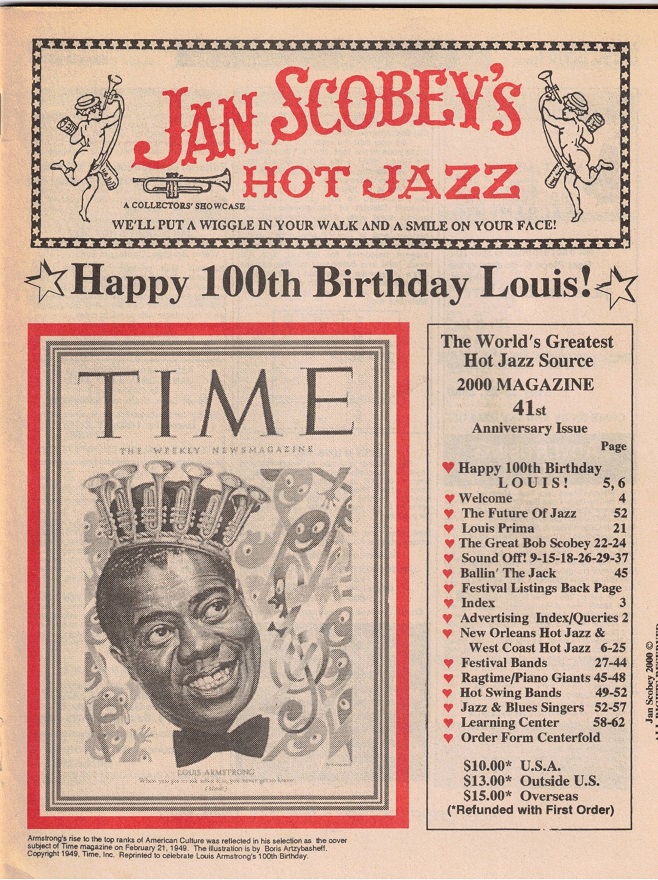
:format(jpeg):mode_rgb():quality(90)/discogs-images/R-4038754-1361632178-3710.jpeg.jpg)
:format(jpeg):mode_rgb():quality(90)/discogs-images/R-4038754-1361632465-2179.jpeg.jpg)
:format(jpeg):mode_rgb():quality(90)/discogs-images/R-9967041-1545066629-9051.jpeg.jpg)
:format(jpeg):mode_rgb():quality(90)/discogs-images/R-9967041-1545066625-3799.jpeg.jpg)
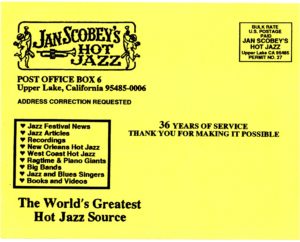
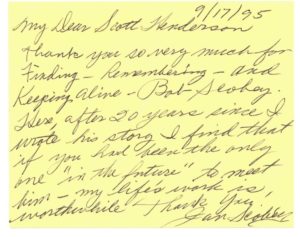
:format(jpeg):mode_rgb():quality(90)/discogs-images/R-8698311-1466852419-7847.jpeg.jpg)
:format(jpeg):mode_rgb():quality(90)/discogs-images/R-4479623-1481684974-5199.jpeg.jpg)
:format(jpeg):mode_rgb():quality(90)/discogs-images/R-6206868-1413726026-4349.jpeg.jpg)
:format(jpeg):mode_rgb():quality(90)/discogs-images/R-5385021-1568480344-4770.jpeg.jpg)
:format(jpeg):mode_rgb():quality(90)/discogs-images/R-3950101-1422558559-6690.jpeg.jpg)
:format(jpeg):mode_rgb():quality(90)/discogs-images/R-4180637-1590619421-9197.jpeg.jpg)
:format(jpeg):mode_rgb():quality(90)/discogs-images/R-1815759-1245185030.jpeg.jpg)
:format(jpeg):mode_rgb():quality(90)/discogs-images/R-4808804-1376175704-6408.jpeg.jpg)
:format(jpeg):mode_rgb():quality(90)/discogs-images/R-9949935-1489088457-1093.jpeg.jpg)
:format(jpeg):mode_rgb():quality(90)/discogs-images/R-2928503-1533767539-7821.jpeg.jpg)
:format(jpeg):mode_rgb():quality(90)/discogs-images/R-3604047-1337028600-6823.jpeg.jpg)
:format(jpeg):mode_rgb():quality(90)/discogs-images/R-9949784-1489085583-7364.jpeg.jpg)
:format(jpeg):mode_rgb():quality(90)/discogs-images/R-5308962-1582993140-9123.jpeg.jpg)
:format(jpeg):mode_rgb():quality(90)/discogs-images/R-13214103-1550071025-1592.jpeg.jpg)
:format(jpeg):mode_rgb():quality(90)/discogs-images/R-8656070-1527690267-9225.jpeg.jpg)
:format(jpeg):mode_rgb():quality(90)/discogs-images/R-6975811-1430809108-7644.jpeg.jpg)
:format(jpeg):mode_rgb():quality(90)/discogs-images/R-4637330-1614525547-6019.jpeg.jpg)
:format(jpeg):mode_rgb():quality(90)/discogs-images/R-4146495-1478295525-5153.jpeg.jpg)
:format(jpeg):mode_rgb():quality(90)/discogs-images/R-5805955-1403178081-3458.jpeg.jpg)
:format(jpeg):mode_rgb():quality(90)/discogs-images/R-5806037-1403179765-2844.jpeg.jpg)
:format(jpeg):mode_rgb():quality(90)/discogs-images/R-3091920-1531574389-3954.jpeg.jpg)

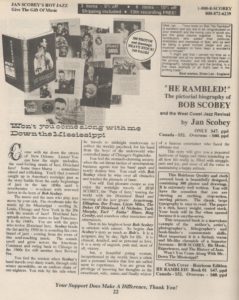
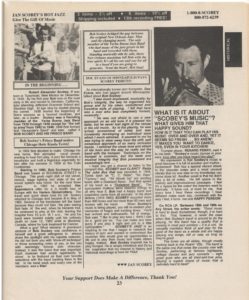

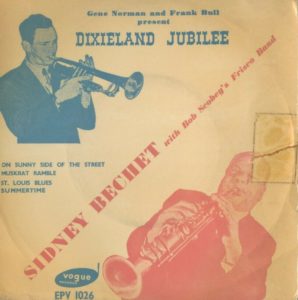
:format(jpeg):mode_rgb():quality(90)/discogs-images/R-2721067-1454076327-1181.jpeg.jpg)
:format(jpeg):mode_rgb():quality(90)/discogs-images/R-11639070-1560507389-5001.jpeg.jpg)
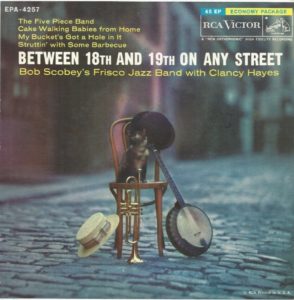
:format(jpeg):mode_rgb():quality(90)/discogs-images/R-10074928-1491159304-3012.jpeg.jpg)
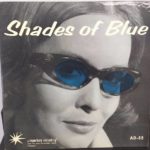
:format(jpeg):mode_rgb():quality(90)/discogs-images/R-2232821-1554003328-2879.jpeg.jpg)
:format(jpeg):mode_rgb():quality(90)/discogs-images/R-2232821-1554003329-4962.jpeg.jpg)
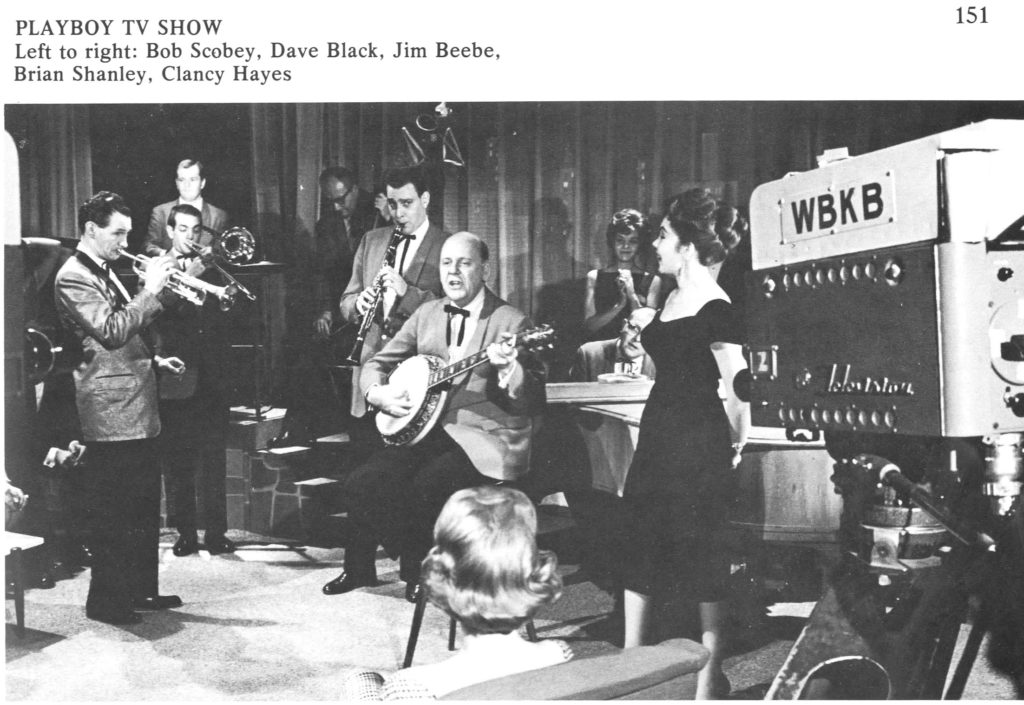
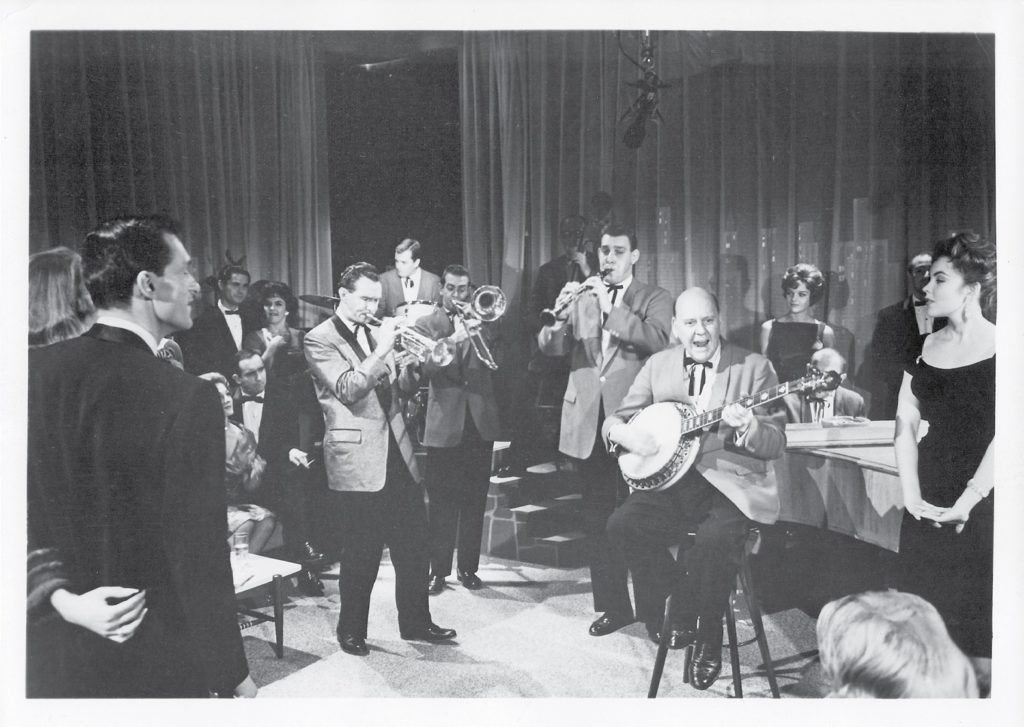
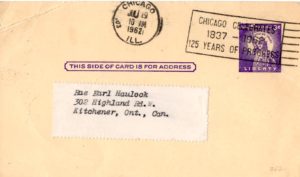
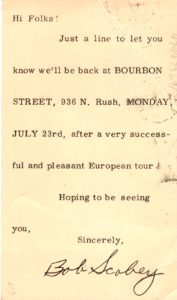
[…] MONTHS & 12 MORE RECORDS & 12 MORE SONGS and did a whole blahg about Bob Scobey in WHAT ON EARTH IS SCOBEYFAN? I haven’t discussed Ruby Braff but I recently purchased a double Ruby Braff CD, “The […]